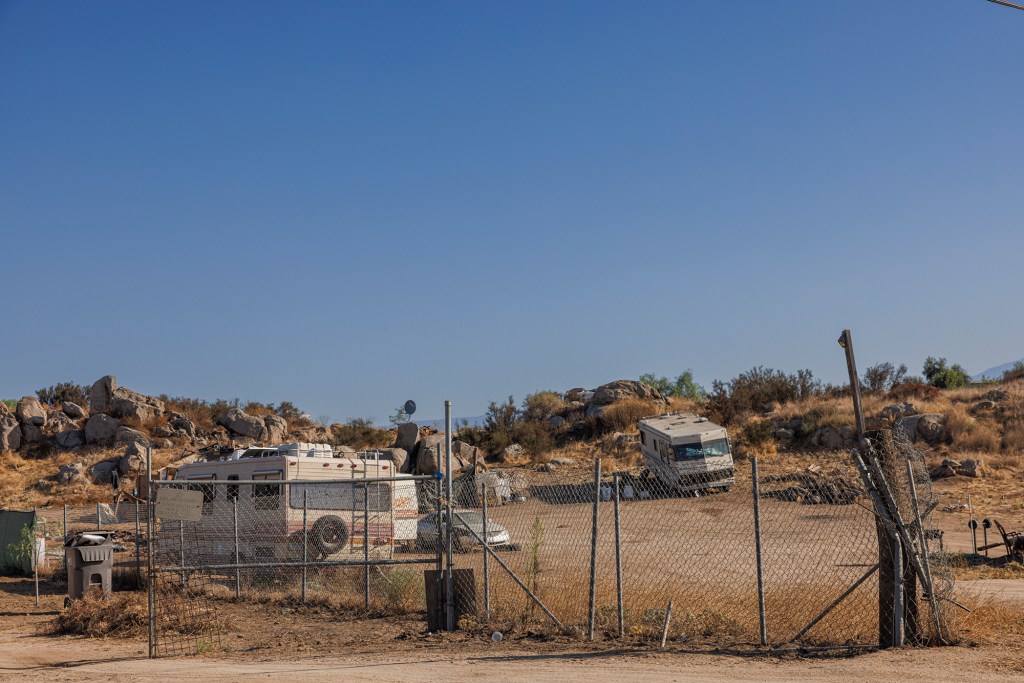In summary
Riverside County’s First District is trying to maintain its rural atmosphere while getting street lights, paved streets and sidewalks.
In some corners of the Inland Empire, the region’s agricultural legacy collides with its urban and industrial development. One of those places is Riverside County’s First District, represented by Supervisor Kevin Jeffries.
The district includes more than half a million people living in the cities of Riverside and Perris or in several unincorporated communities, such as Good Hope, Mead Valley and Highgrove.
Family incomes in the district range widely. The community with the lowest annual household median income is Good Hope at $43,722, and the highest is Highgrove at $80,897, according to a 2022 district profile.
About 7 in 10 residents are Latino in Good Hope, Jurupa Valley, Mead Valley and Perris, and White people make up more than half the population in Highgrove, March Air Reserve Base and Riverside. There are concentrations of Asian residents and Native Hawaiians (12%) in Highgrove and March ARB and Black residents in Perris (8%).
Jeffries, who previously served in the state Assembly, is in his final term on the Riverside County Board of Supervisors. He discussed the diverse geography and character of the First District.
How do the communities in your district differ?
Riverside city is very self-sufficient and compact in the sense that they have strong city council leadership, strong mayoral leadership, and they’re very actively engaged in regional political efforts and lobbying efforts. They’re doing very well looking out for their constituents, to improve the long-term viability of the city. It allows me to focus on our disadvantaged communities. Some of them are areas that time forgot, that infrastructure services didn’t come into.
What are the challenges for unincorporated communities such as Mead Valley and Good Hope?
They are truly the last vestiges of rural communities in the western half of the county. The population has exploded in those communities, so now we have over 20,000 people, which is actually bigger than some of our small cities in this county. And they don’t have the services, they don’t have the amenities, they don’t have the infrastructure. So we’ve been walking this fine line between trying to maintain the rural atmosphere while delivering some modern infrastructure, like street lights, paved streets, water lines and sidewalks— just bare essentials necessary to make the communities a little safer for the kids to walk to and from school and make the roadways a little safer.
What are some objections to modernizing those areas?
The residents who moved there a long time ago love their rural lifestyle, love their horseback riding, love the trails. They’re holding onto that lifestyle, and rightly so in many ways. We don’t want to overturn that rural lifestyle. But, at the same time, we have to make it safer as the population continues to grow. So that gets back to the competition between sidewalks and trails, the competition of having dark streets and having well lit streets. We want to improve the quality of life while protecting the rural atmosphere, so it’s a delicate balance.

